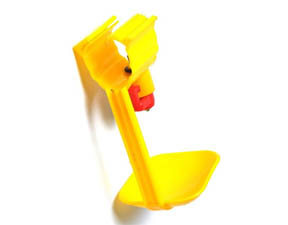Quality Chicken Scalding Equipment for Sale at Competitive Prices with Fast Shipping Options Available
Aug . 13, 2024 09:34 Back to list
Quality Chicken Scalding Equipment for Sale at Competitive Prices with Fast Shipping Options Available
The Importance of Chicken Scalders in Poultry Processing A Guide for Buyers
In the poultry industry, efficiency and humane treatment of animals are paramount. As farmers and processors seek to improve their operations, one critical piece of equipment that often comes into play is the chicken scalder. Designed to facilitate the processing of chickens after slaughter, scalders play a vital role in ensuring high-quality meat and maintaining hygienic standards. In this article, we will explore the importance of chicken scalders, the different types available for sale, and what buyers should consider when making a purchase.
Understanding Chicken Scalders
Chicken scalders are machines that use hot water to loosen feathers from slaughtered birds, making the plucking process easier and more efficient. The right scalding temperature is crucial; if the water is too hot, it can damage the skin and meat, while water that is not hot enough can make feather removal difficult. Proper scalding not only enhances the quality of the meat by minimizing bruising and damage but also aids in the removal of contaminants from the feathers.
Types of Chicken Scalders
There are several types of chicken scalders available on the market, each serving different needs and operational scales. Here are a few common types
1. Batch Scalders Ideal for small to medium-sized operations, batch scalders are designed to handle a set number of chickens at a time. They are typically more affordable and are suitable for farmers who process their chickens in smaller quantities.
2. Continuous Scalders Designed for larger operations, continuous scalders can process a steady flow of birds. As chickens are fed into the machine, they are continuously exposed to hot water, allowing for greater efficiency and reduced labor costs.
3. Electric Scalders Electric scalders use electric heating elements to maintain water temperature. While they may have higher initial costs, they are efficient and can be more environmentally friendly.
4. Gas-Powered Scalders These scalders use propane or natural gas to heat water. They are particularly popular due to their ability to heat water quickly and maintain the required temperatures efficiently.
chicken scalders for sale

Buying Considerations
When looking to purchase a chicken scalder, buyers should consider several factors to ensure they choose the right model for their needs
1. Capacity Assess the volume of chickens processed weekly and choose a scalder that can handle your operational scale. Selecting a scalder with the right capacity is crucial to maintaining efficiency.
2. Material and Durability Look for scalders made from high-quality materials that can withstand high temperatures and frequent use. Stainless steel is a common choice due to its resistance to corrosion and ease of cleaning.
3. Temperature Control The ability to accurately control water temperature is vital for effective scalding. Buyers should look for models that offer precise temperature settings to avoid potential issues with meat quality.
4. Maintenance and Cleaning Opt for scalders that are easy to maintain and clean. A design that allows for quick disassembly and thorough cleaning can help prevent contamination and ensure compliance with health standards.
5. Price and Warranty Evaluate the price in relation to the features offered. Additionally, consider the warranty terms, as a solid warranty can provide peace of mind regarding the investment.
Conclusion
Investing in a chicken scalder is a critical decision for poultry farmers and processors aiming to enhance their operational efficiency. With various models available for sale, understanding the purpose and features of these machines is essential. By considering capacity, materials, temperature control, maintenance, and cost, buyers can make an informed choice that positively impacts their poultry processing operations. In a competitive market, investing in quality equipment like chicken scalders is not just a necessity; it is a step towards ensuring high standards of animal welfare and product quality.
-
Automatic Feeding Line System Pan Feeder Nipple Drinker|Anping County Yize Metal Products Co., Ltd.
NewsJul.29,2025
-
Automatic Feeding Line System-Pan Feeder Nipple Drinker|Anping County Yize Metal Products Co., Ltd.
NewsJul.29,2025
-
Automatic Feeding Line System - Pan Feeder Nipple Drinker|Broiler Farming Equipment
NewsJul.29,2025
-
Automatic Feeding Line System - Anping Yize | Efficiency&Durability
NewsJul.29,2025
-
Automatic Feeding Line System - Anping Yize|Poultry Efficiency&Durability
NewsJul.29,2025
-
Automatic Feeding Line System-Anping County Yize Metal Products Co., Ltd.|Durable PP Material&Easy Maintenance
NewsJul.29,2025






